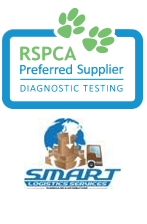In the August 2014 issue of the AVJ, CEO Graham Catt wrote on international engagement with a particular focus on the International Veterinary Officers Coalition (IVOC).
Recently, I was invited to the Federation of Asian Veterinary Associations (FAVA) conference and council meeting in Singapore. While there I also participated in the World Veterinary Association Council meeting and General Assembly. In March I hope to attend the Commonwealth Veterinary Association conference in Kuala Lumpur. With the invaluable experience gained from many formal and informal meetings in Singapore, I have been starting to consider our strategy and the amount of resources AVA could/or should be devoting to this engagement on an ongoing, and not necessarily solely event-focused, basis.
I was impressed with the camaraderie and enthusiasm of the FAVA Council meeting attended by representatives from the 20 member countries. The Presidency has passed to the indefatigable Shane Ryan from the Singapore Veterinary Association and the secretariat is being efficiently managed from Thailand by Dr Achariya Sailasuta. The constitution is under review and various other governance matters have been tightened up. Despite this, the organisation is struggling financially and is managed solely on a volunteer basis.
The Commonwealth Veterinary Association (CVA), established almost 50 years ago, represents 45 veterinary associations and 45,000 members. CVA has programs to provide textbooks and journals to vets in developing countries, projects to improve animal health and welfare, student exchange programs, faculty training and updating, technical workshops and other forms of continuing professional development. AVA members participate in many of these.
The World Veterinary Association (WVA) is a federation of more than 80 veterinary associations with an aggregate of 500,000 members. This 151-year-old institution is constrained by a limited budget and a small secretariat based in Brussels shared with the Federation of Veterinarians in Europe (FVE). The hope is that with a new executive, headed by former AVMA President René Carlson, some constitutional changes, a drive to seek sponsorship and more focus on vision and mission rather than internal issues will reinvigorate the WVA. This should reinforce its relevance to animal welfare, One Health and international biosecurity.
Notably, China is not a member of FAVA or of WVA and given the sheer size of the country and the potential for employment, trade and collaboration, this omission currently diminishes the reach of these organisations.
The ASEAN Economic Community becomes a reality in 2015. Alongside free trade and less red tape between the participating countries, is the mutual recognition of some professional qualifications. Veterinary science is not yet on the list, but its inclusion may make sense and is likely to be introduced in a few years. Inextricably linked to this must be a form of accreditation of the veterinary schools. The Australasia Veterinary Boards Council and other international accrediting bodies are discussing their roles in Asia; the AVA should consider its level of involvement.
Member organisations have differing levels of maturity of governance, regulatory support, responsibility and representation of the profession. AVA is a member of all of these organisations and over the years has had varying levels of involvement and representation. There are also a myriad of NGOs, NFPs, statutory bodies, government-funded bodies and other consultancies we work with locally, regionally and globally. In addition, almost every one of our special interest groups is connected with a regional and/or international association.
Does the number of international associations with inevitable overlapping memberships dilute the effort and outcomes? Should there be a global repositioning of these organisations with a new strategy more commensurate with current needs and political reality? The issue is complex, but the fact that some of these associations are struggling is an indicator that change is required.
Identified challenges in the region are rabies eradication, standards and infrastructure in the many veterinary schools, accreditation and certification of veterinarians, safety and supply of medicines, a shortage of vets in some countries, animal welfare awareness and standards, and working alongside paraprofessionals.
The AVA must be consulted and have ‘a seat at the table’ whenever and wherever policies involving Australian veterinarians, Australian animals or biosecurity are discussed at an international level. We already invest time and resources in this and have established networks of members who can feed information and advice in both directions.
How can AVA as a member-based association best assist some of our poorer neighbours, those with less well-established veterinary schools or with developing regulatory systems or accreditation?
Can we assist in the governance and management of other member associations? There is an acute and largely unmet need for quality continuing professional development in these regions. AVA has a well-developed continuing professional development programme: should we include off-shore activities? In what issues should we take a leadership role and how best can we share resources and experiences?
There are clear mutual advantages to capacity building and joint activity around animal welfare, biosecurity and professional standards and in food safety and supply, and the maintenance of open channels of communication.
Julia Nicholls
President
Source: The Australian Veterinary Association



